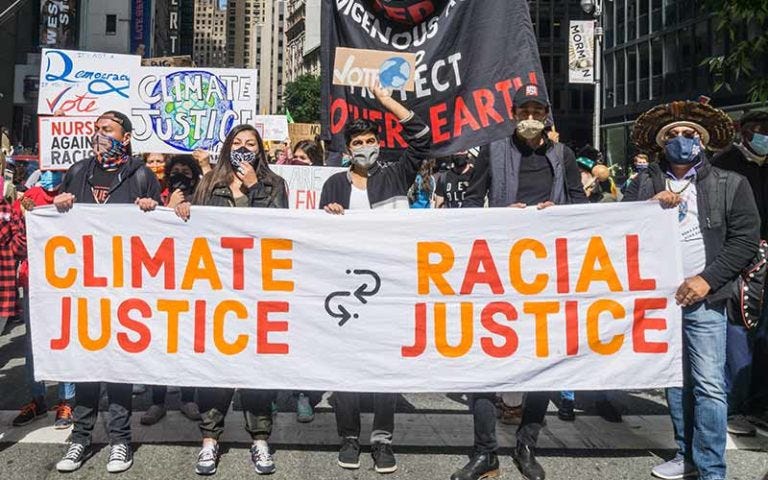"Green" energy bill creates new Office of Environmental Justice and Equity to combat...racism (of course)
What does the equitable distribution of energy, benefits and burdens truly mean?
A new “office of environmental justice and equity” created as part of the recently enacted “Green” energy bill will be responsible for “implementing environmental justice principles” throughout the entire executive office of energy and environmental affairs.
The fledging bureaucratic entity “shall be administered by an undersecretary of environmental justice and equity” reporting to the secretary of energy and environmental affairs.
Environmental justice principles are steeped in the language of intersectionality with a strong inference that the environmental burdens of energy production and distribution have long and only been borne by aggrieved communities frequently and courted by the far left. A helpful but I’m sure, completely coincidental political convenience.
According to the Conservation Law Foundation, environmental justice and racial justice are effectively the same thing:
For decades, low-income, immigrant, and communities of color across New England have been overburdened by air pollution from power plants, congested highways, and industrial facilities. These same burdens resulted in COVID-19 and its associated economic crisis taking a much heavier toll on these communities than on their wealthier, whiter neighbors.
Discriminatory housing, zoning, and transportation policies have disenfranchised the residents here, denying them the power to shape their own neighborhoods. This directly harms resident health and well-being, stretching over generations.
The new office will “develop standards and guidelines” inspired by environmental justice principles that will influence the state’s decision making on “community benefit plans and agreements” and “cumulative impact analyses.”
Input shall be solicited from various organizations including: “Environmental justice community organizations.” No organizations, not even the Conservation Law Foundation, were named in the legislation.
The plain language of the law appears harmless: “support protection from environmental pollution and the ability to live in and enjoy a clean and healthy environment, regardless of race, color, income, class, handicap, gender identity, sexual orientation, national origin, ethnicity or ancestry, religious belief or English language proficiency, which includes: (i) the meaningful involvement of all people with respect to the development, implementation and enforcement of environmental laws, regulations and policies, including climate change policies; and (ii) the equitable distribution of energy and environmental benefits and environmental burdens.”
But what does the equitable distribution of energy, benefits and burdens truly mean?
How much will it cost, aside from the obvious expense of operating the new office?
What, if any, are the benefits?
Shouldn’t the state already be seeking the most environmentally conscious energy sources we can afford and wouldn’t that benefit all populations? [Natural gas and nuclear].
And since the state is committed to a “green” energy future won’t pollution be a thing of the past come the year 2050, if not before?
No details were available at press time as to how the Commonwealth managed to maintain operational functionality, in the absence up to this date, of the new office or undersecretary.


